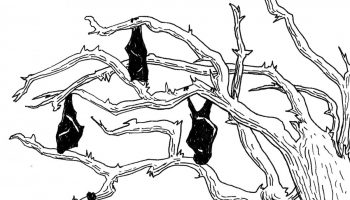The Chautauqua Lake Association’s annual meeting Monday in Lakewood drew a crowd of lake-lovers, including a number of Chautauquans and several prominent local politicians. They heard several reports on the health of the lake and the state of efforts to arrest its deterioration.
CLA President Craig Butler said lake crews have already removed nearly 8 million pounds of marine growth from Chautauqua Lake this summer. That’s the equivalent of 4,000 tons, and puts this year on pace to provide the largest harvest of lake weeds in five years. This year’s final haul has the potential to set a new record.
This is a bad sign for those who hope beaches — including the Institution’s — will remain open throughout the summer season. In 2013 and 2014 the Institution beaches had to be closed for extended periods in August.
Butler reviewed and applauded continuing efforts by the staff at the Cummins engine plant in Jamestown and other county departments to keep the shoreline free of large debris.
Retired Cornell University scientist and CLA consultant Bob Johnson reported that so far, three marine aquatic plants have been identified in Chautauqua Lake that have not been recently observed.
“It’s too early to assess the danger to the lake of these new plants,” Johnson said.
He said no one has spotted water chestnuts yet, but cautioned that these invasive plants are starting to flower and become more visible.
Several speakers noted that CLA is one of only 24 entities selected to receive invasive species management grants from New York State. CLA has used the funds so far to launch a watercraft steward program on the weekends at lake boat launch sites.
Volunteers explain to boaters the potential risks of non-native species hitching rides on their boats into Chautauqua Lake from other waterways. A broader public education effort is planned, as is an external boat inspection program.
Guest speaker Paul Battaglia, a longtime Chautauqua Lake fishing guide, also praised the watercraft steward program. He noted that muskies are “healthy, hungry and plentiful” in Chautauqua Lake this summer, and that fishermen are reporting abundant catches. Battaglia said around 90 percent of the popular game fish are released unharmed back into the lake after being caught.
Battaglia also noted the benefits of submerged aquatic vegetation. While SAV is a major target of CLA’s lake-mowing program, Battaglia pointed out that mowing and cutting should only be to a depth sufficient to remove water sport hazards. Below that level, he said, SAV will absorb harmful nitrogen and phosphorus in the water.
County Executive Vince Horrigan attended the meeting, and spoke of leadership around the lake on various fronts. He had particular praise for the county’s continuing efforts at streambed restoration and extending sewer systems to all lake basin regions. Horrigan attended the CLA gala held in June at Seaver Gym on the grounds before the season, and lauded efforts to expand CLA’s profile. CLA continues this year to contract with the Institution for lake mowing and debris removal from the shoreline.
Editor’s Note: John Ford serves on the Chautauqua Lake Association board.






